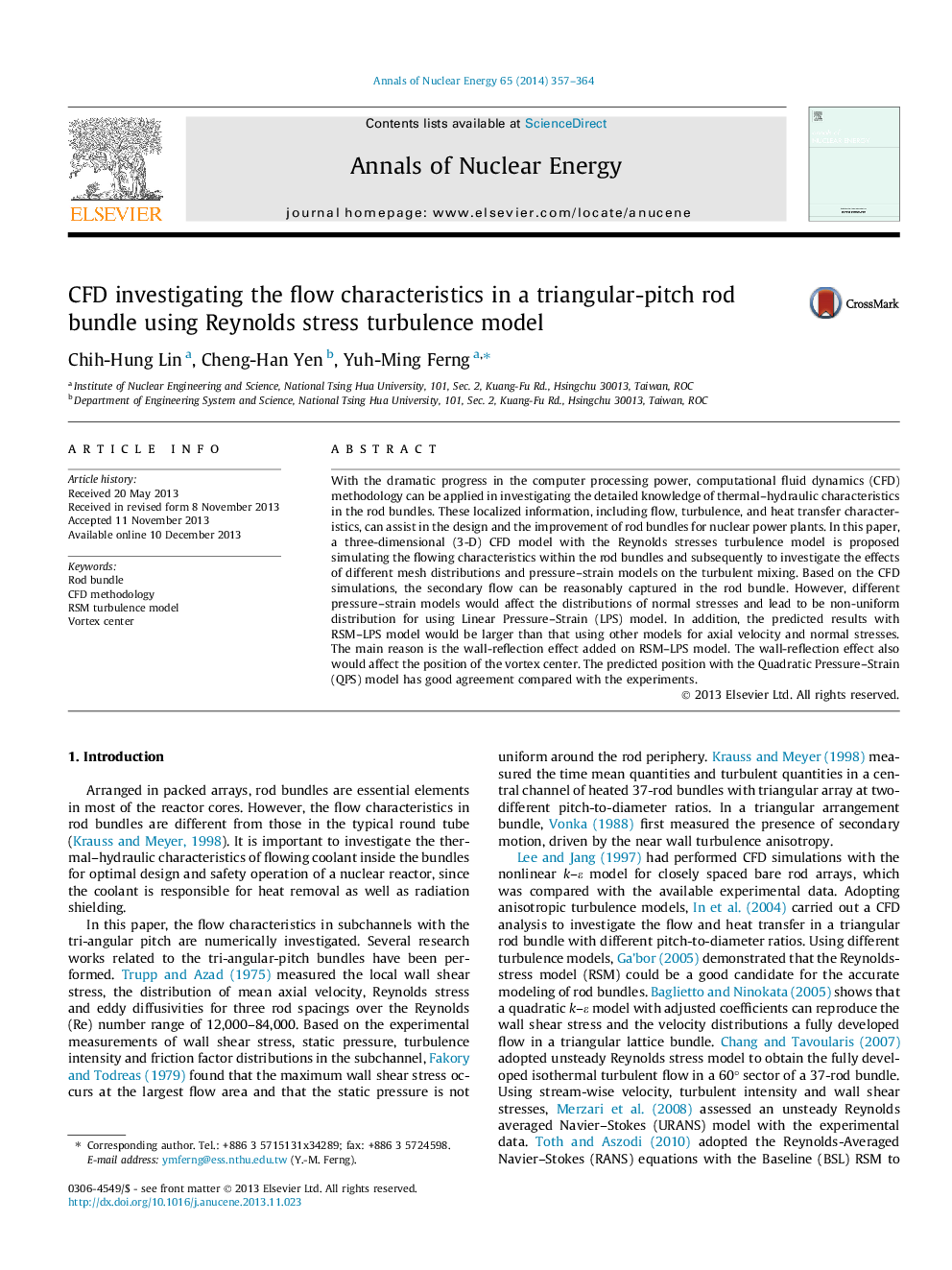| کد مقاله | کد نشریه | سال انتشار | مقاله انگلیسی | نسخه تمام متن |
|---|---|---|---|---|
| 1728438 | 1521133 | 2014 | 8 صفحه PDF | دانلود رایگان |

• CFD is used to model triangular-pitch rod bundle.
• The Reynolds stress model with different pressure–strain models is used in this investigation.
• Predicting the secondary flow characteristics and made comparisons with measured data.
• Predicting the position of vortex center and the distribution of normal stresses.
• The distribution trends of normal stresses have good agreements.
With the dramatic progress in the computer processing power, computational fluid dynamics (CFD) methodology can be applied in investigating the detailed knowledge of thermal–hydraulic characteristics in the rod bundles. These localized information, including flow, turbulence, and heat transfer characteristics, can assist in the design and the improvement of rod bundles for nuclear power plants. In this paper, a three-dimensional (3-D) CFD model with the Reynolds stresses turbulence model is proposed simulating the flowing characteristics within the rod bundles and subsequently to investigate the effects of different mesh distributions and pressure–strain models on the turbulent mixing. Based on the CFD simulations, the secondary flow can be reasonably captured in the rod bundle. However, different pressure–strain models would affect the distributions of normal stresses and lead to be non-uniform distribution for using Linear Pressure–Strain (LPS) model. In addition, the predicted results with RSM–LPS model would be larger than that using other models for axial velocity and normal stresses. The main reason is the wall-reflection effect added on RSM–LPS model. The wall-reflection effect also would affect the position of the vortex center. The predicted position with the Quadratic Pressure–Strain (QPS) model has good agreement compared with the experiments.
Journal: Annals of Nuclear Energy - Volume 65, March 2014, Pages 357–364